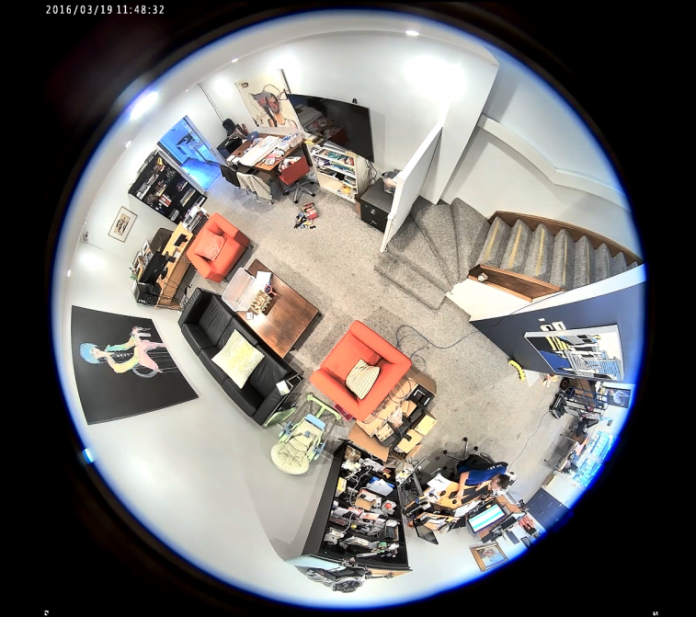FROM the point of view of image quality, would you argue hemispheric cameras are the best option to provide all-round surveillance in bigger areas – such as shopping centres, airport retail precincts, universities and the like? Or are we better to think about multiple cameras with smaller fields of view?
Let's get this straight right from the start – hemispheric cameras with 360-degree fields of view spread their pixels. Depending on sensor size this pixel spread will render the image soft from very close in to quite close in – less than 10m and in some cases closer still. As light falls, detail will be lost earlier, too. Depending on what you are trying to achieve, this softness in larger applications may mean no court-admissible face recognition.
The trade-off will be situational awareness of a profound nature – at no time will a subject in the target area leave the field of view. What this means is that you need your hemispheric view to be able to identify dress or general features of individuals you’ve already identified at an entry point using a camera with a much narrower angle of view – 8-10mm for a 1/3rd of an inch sensor. If you get these 2 aspects right, then hemispherics will save you money through reducing the number of cameras and associated infrastructure required.
Optically, hemispheric lenses have a very small hyperfocal distance – this means pretty much everything in the scene will in focus. Any wide lens will be a risk from flare. Hemispheric CCTV cameras also have lashings of an optical aberration called barrel distortion – magnification decreases the further you go from the optical axis.
With a hemispheric, the presence of barrel distortion is deliberate – the lens has a tiny focal length and a massive aperture angle. Generally speaking, surveillance cameras deliver multiple image streams from a hemispheric camera – a single fisheye, then a range of images where the curvilinear scene is adjusted to a rectilinear format. There will obviously be some loss of detail at the edges, top and bottom where pixel input is shorn off by software. Correcting software that relies on averages will also introduce softness to the final output.
There are other alternatives to panoramic cameras when you are looking for complete coverage of an area – you can use multi-head cameras, each with a narrower angle of view, with the output stitched together by software in-camera. There are pros and cons to this approach. The sharpness of multi-head cameras is certainly better but much depends on the purity of the software stitching – you’ll need to undertake objective testing to establish which is best for you. It may be that in more compact applications, a quality panoramic camera does a more integrated job at a much lower cost. ♦












